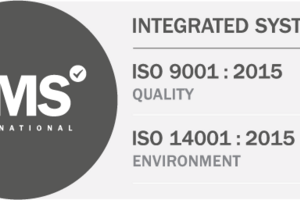06 July 2016
Changes to emergency lighting: no reason to panic (part 2)
Recent revisions to the emergency lighting requirement in the UK shouldn’t be a cause for consternation – but do mean that facilities managers need to carefully review their current installations. In the second of a two-part overview, Greenlite’s In-House Lighting Designer Andrew Balmer looks at steps that can be taken to guarantee compliance.
Recent regulatory changes in the UK have prompted many building facilities managers to review the design and implementation of their emergency lighting installations. This is something I can personally attest to here at Greenlite, where the number of enquiries has increased discernibly over recent months.
While there are many individual additions and ‘guidances’ contained in the new regulations – which deliver compliance with the European emergency lighting luminous requirement specification standard, BS EN 1838:2013 – the overall effect is to restate the responsibility that facilities managers and building owners must bear in ensuring that their premises are safe for employees and visitors.
Given the complexity and extent of the regulations as they now stand, it is arguable that only an emergency lighting system test – such as those carried by Greenlite and a number of other leading specialists – can provide complete peace of mind with regard to compliance. But if this is something that you are not in a position to carry out immediately, there are some measures that can be taken to verify whether there are some problems with present installations.
Firstly, make sure that there are exit boxes where required. The obvious ones are situated at final exits, but if it is necessary to pass through a room to get to the exit, an additional exit box – or sufficiently lit sign – is needed beforehand as well.
Then there is cause to check the spacing of existing bulkheads. As a rough guide, based on a standard 8w bulkhead these should be 3m from the wall and 6m apart with a 2.8m ceiling, the exact data should be available within the log book or direct from the manufacturer. Also, it is possible that in many existing retail outlets, for example, installations have been designed to the old regulations at 0.2 lux for an open area in which it should now be 0.5 lux. Meanwhile, exit routes should now be at 1 lux along the centreline.
The new regulations also stress the imperative for a log book to be kept on-site noting all tests and repairs, while in our client visits we are emphasising the importance of daily checks of the operational LEDs to make sure that emergency lights are on/charging, as well as more extensive monthly functional and annual duration tests.
Ultimately, there isn’t much here that should result in mass compliance failure if facilities managers carry out reviews of their emergency lighting installations, and then undertake regular assessment thereafter. But similarly, it is evident that there is no substitute for the complete reassurance that can be offered by a thorough emergency lighting test carried out by Greenlite or one of the other leading specialists.


